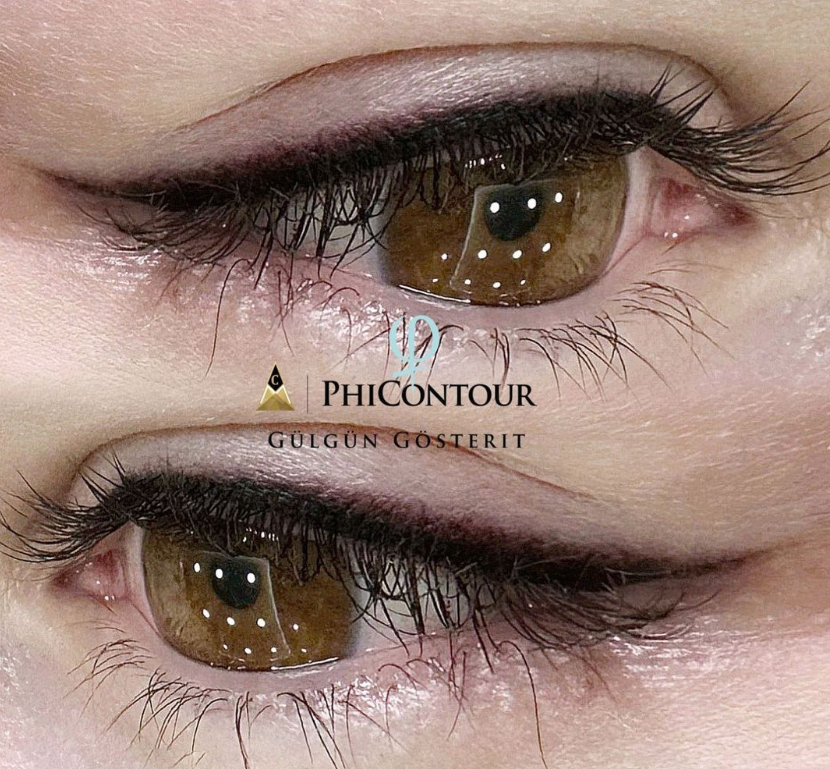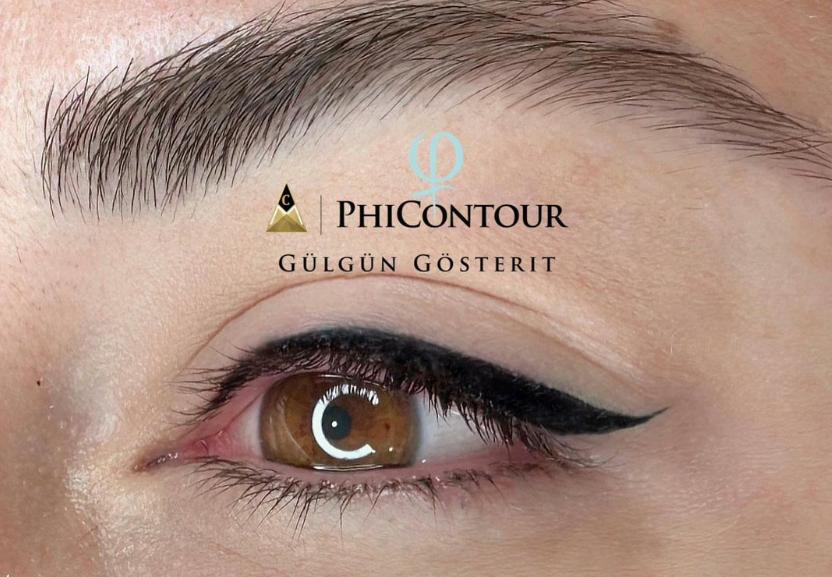The permanent eyeliner healing process lasts up to 6 weeks. This process is very extensive and it can be just as physically and emotionally exhausting. However, if people follow the permanent eyeliner healing and aftercare instructions given by the artist so no need to worry about it.
Permanent Eyeliner
Permanent eyeliner is a form of cosmetic tattooing, often referred to as a semi-permanent makeup technique, that is done by a trained artist. The ink used is very different from body tattooing ink and is only deposited on the upper layer of skin.
The pigment colour is designed to fade over time. The tattoo ink is applied to the eyelash line and also can be applied as a fine, thin, or medium to thick in the eyeliner style. Eyeliner tattoo lasts up to 3 years, with touch-up appointments needed at about 18 – 24 months after the initial application.
Permanent Eyeliner Healing Process
Although it is generally considered a non-invasive process, permanent eyeliner implies breaking the first of the skin surface, after which the skin surface needs some time to recover and heal the micro-wounds. This time period is referred to as the permanent eyeliner healing process, and it is an inevitable part of the whole procedure.
Permanent Eyeliner Tattoo Healing Day By Day
The complete and day-by-day permanent eyeliner healing stages follow as.
Day 1
People can expect some soreness, swelling, and irritation on the 1st day, or even longer. Some people can relieve the discomfort with a cold compress, just do not press too hard. If the swelling does not go down within a few days, contact the artist and told them about the situation.
Day 2
The swelling on the eyelids should be better by now, it may even go down completely. The eyelids feel tight and the eyelash area is sensitive. Do not touch and just clean the area gently then apply an ointment.
Days 3-4
On day 4, scabbing and flaking stage start. It is a perfectly normal part of the eyeliner tattoo healing process it means your skin is closing up the wounds. Don’t pick the scabs no matter how itchy they get. Let the flaking and peeling stage proceed in its own time.
Days 3 and 4 are the hardest to deal with. The area is itchy and it does not look very attractive. Luckily, it does not last too long and can relieve the itchiness with a tattoo eyeliner aftercare ointment suggested by the artist.
Days 5-10
The flaking stage continues and at the end of this stage, the eyeliner looks faded. Don’t need to panic and think that the pigment’s disappeared or faded. The pigment color will return after the aftercare routine.

Days 11-15
At this time, people probably won’t need to follow the strict aftercare routine anymore. They should still refrain from wearing eye makeup, though.
Days 16-41
The permanent eyeliner healing process will continue for a few more weeks, but people won’t see the unattractive symptoms anymore. The pigment colour may gradually soften a bit further.
People can now start wearing eye makeup again, but make sure to get fresh eye products – old mascara tubes, eye pencils, eyeshadow containers, and eye brushes inevitably have germs in them that the freshly tattooed skin can not handle. This can cause a risk of developing an infection.
Don’t Do This During Permanent Eyeliner Healing Process
Always be very gentle during the entire eyeliner tattoo healing stages. Here is a list of what you should avoid during the permanent eyeliner healing process:
- Avoid applying any extra eye product different from the ointment during the healing process.
- Do not sleep on the belly. Sleep just by the back.
- Must try to avoid sweating in the first week.
- No exercising during the healing process.
- Avoid sunlight exposure for at least 2 weeks.
- Avoid pools, saunas, hot tubs, and the sea during the entire tattoo eyeliner healing process.
If you want to read more about eyeliner tattoo gone wrong. Click the following

Things To Do After Permanent Eyeliner Healing Process
Once eyeliner tattoos become heal, there are still a couple of things you should do to keep the eyelids pretty nice. Here are some follows:
- Everyday uses sunscreen in the eyelids area.
- If you have the habit of doing facials, always tell the beautician about eyeliner tattoo treatment before the facial.
- Avoid harsh eye products in the treated area.
Permanent Eyeliner Healing Process – Main Takeaways
The permanent eyeliner healing process can be very annoying and tiresome. To make things as easy as possible, read about the permanent eye liner healing schedule and prepare mentally yourself for each of the stages. The first 10 days are the most uncomfortable but once the eyeliner starts taking shape and its true color emerges, you will forget all about the soreness, the scabbing, and the flaking of permanent eyeliner.
Just make sure to follow the eyeliner tattoo aftercare routine according to the artist’s suggestions closely in order to stay safe and healthy and ensure maximum pigment retention.

FAQ’s
1. What Are The Steps I Should Take For Permanent Eyeliner Aftercare?
Permanent eyeliner aftercare involves keeping the treated area clean, avoiding water and makeup, rubbing or picking the size, protecting the area from sun exposure, avoiding swimming and sweating, avoiding certain products, and keeping any follow-up visits with the technician as scheduled.
2. Does A Fully Healed Eyeliner Tattoo Require Any Special Maintenance?
Typically it does not require any special maintenance beyond regular touch-ups to maintain the color and shape of the liner when eyeliner tattoo healed.
3. Why Did My Eyeliner Tattoo Faded After A Week?
There could be several reasons why permanent makeup eyeliner tattoos may fade after only a week. Some possible causes include:
- The ink used may have needed higher quality or more suitable for the procedure.
- The artist may have used a different technique or needed more experience.
- The aftercare instructions may not have been appropriately followed, or the area may have been exposed to things that could have caused the ink to fade, such as excessive sun exposure, rubbing, or picking at the spot.
- The person may have an allergic reaction to the ink used.
- There could be certain factors that could have caused the tattoo to fade, such as certain medications or certain skin types.